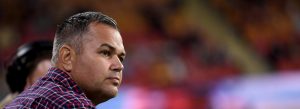
 Tale of the Tape: What transfer Tarris Reed Jr. brings to UConn men’s basketball
Tale of the Tape: What transfer Tarris Reed Jr. brings to UConn men’s basketball
Dan Hurley and the UConn men’s basketball team took their first offseason step toward a potential three-peat by signing Tarris Reed out of the transfer portal. Reed, a 6-foot-10, 265-pound big man from the St. Louis area, served as Michigan’s starting center last season and has two years of eligibility remaining.
The Wolverines, who earned a 1-seed and made an Elite Eight just three years ago, struggled in a disastrous 8-24 season in 2023-24 that ended with the dismissal of alumnus Juwan Howard. Meanwhile, the Huskies had more or less the opposite season in Storrs. It does not take a basketball expert to observe that this transfer will mark a very different environment for Reed.
While it would be easy to overstate the ability of Hurley and an excellent coaching staff, the difference they represent in development (partially owing to a health scare that kept Howard away from the Wolverines for months) points toward a higher potential for Reed than he would have had in Ann Arbor.
One thing to note before we get into the scouting report is that he doesn’t pop off the charts statistically. It’s hard to tell how much of that is due to scheme, but there are a few things that we can isolate from just a quick glance. His rebounding percentages are solid, above average for Big Ten centers, and he blocks shots at a reasonable rate—just don’t expect another Donovan Clingan at the defensive rim.
He converts a productive amount of his two-point shots, is a poor free-throw shooter, and has attempted only three threes in his 66 college games, so it’s not much of a factor so far. His Box Plus/Minus ranked sixth out of eight players in the regular Michigan rotation, and while that’s not a great result on such a disappointing team, his defensive component of BPM ranked second on the team.
Thankfully, Reed’s collegiate history is in the Big Ten, which is a lot easier to translate to the Big East than a weak conference like the Patriot League, where Cam Spencer played two seasons ago. We won’t have to adjust for Reed’s competition level; he’s spent two seasons playing against very comparable talent, and Reed won’t have to adjust much to greater speed or athleticism.
Despite the stats showing Reed has been more successful on defense to this point, the part of his game that represents the most upside is on offense. He’s quite good at the rim, scoring on approximately 59% of his attempts. He’s only average in post-up situations though, and has struggled in put-back situations, despite being a quality offensive rebounder.
Where he truly succeeds is face-to-the-basket possessions. Reed is very quick for his size—defensively, he’s able to pick up smaller guards from the perimeter and stick with them on drives—and is at his best operating in space in interior one-on-ones. Reed can put the ball on the floor and use his speed to maneuver past opponents, or hit less mobile opponents with a spin move or drop step. His post moves need work, but if he catches the ball in the right spot he can get to the rim.
One area where he will need some work is in his shot selection. He’s clearly able to consistently get to the rim, which has made some of his shots confusing. He’s developing solid touch from close range, but shouldn’t be relying on floaters as often as he did as a sophomore. He doesn’t have much range yet but took a few too many ill-advised mid-range jumpers.
With time, he should be able to step out and hit shots from 10-12 feet consistently, but I’m not sure if his current mechanics will allow him to be a reliable outside shooter the same way Adama Sanogo was in his junior season. At the same time, remember those multi-step moves Sanogo did at the basket, using the rim as an obstacle and getting to the opposite side of the backboard? With a little more work, that’s where Reed can truly shine.
Unfortunately, his offensive role may be fairly limited until he picks up a couple more secondary skills. Right now, the biggest issue is a concerning propensity to give the ball away; Reed turned the ball over on a shocking 23.4% of his possessions last season (h/t Ken Pomeroy), a mark typically only seen for playmaking guards. A center who didn’t pass the ball much, on the other hand, should not be approaching a turnover rate that high. If he can’t cut down on mistakes, it could significantly limit the ceiling on the Huskies offense. Many of his turnovers were simply being unprepared to catch a pass, which can be drilled into a player when working in an offense as strongly defined as UConn’s, but many also came from not recognizing that he was double-teamed.





